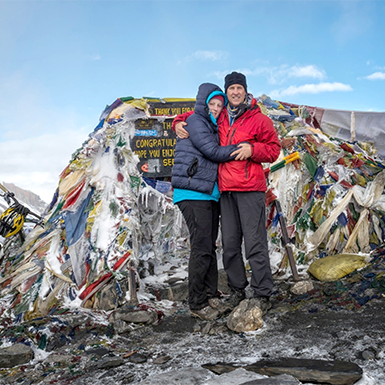Annapurna Circuit Trek is on the bucket list of many trekkers from all around the world. Trekking in the region takes you to the rainshadow region of Annapurna and the Dhaulagiri mountain range. The Trek’s breathtaking prospect from the start to the end can’t be described in words. This Trek is a lifetime adventure. No wonder Annapurna Circuit Trek is on the bucket list of most travel enthusiasts.
This is one of the most extended and challenging treks in Nepal. To embark on this demanding Trek, you can either trek solo or hire a guide for the Trek. Annapurna Circuit Trek without a guide is quite challenging, but it is not impossible. This Trek provides a view of the different mountains in the Annapurna Range. It takes you into the Annapurna Sanctuary, a high glacial basin 40km north of Pokhara.
You can successfully conquer this Annapurna Trekking without a guide with proper preparation and planning. Besides, there are many settlements in this area. And they will surely help you in case you get lost. It won’t be much of a challenge if you are experienced in hiking at high altitudes and can trek independently without a guide.
However, if you are new to trekking and have not been on any high-altitude treks or have any health issues, hiring a registered trekking guide for a pleasant and safe experience is better.

How to Get the Trekking Permits For Annapurna Circuit Trek Without a Guide?
To trek in Nepal, you must obtain various trekking permits. Depending upon the trekking regions, the trekking permits vary.
Trekking without a guide, you will be accountable for everything. You must know which permits you to require and where to get them. You also need to manage all the necessary documents to get the permits.
Required permits to Trek the Annapurna Circuit
Annapurna Conservation Area Permit (ACAP)
- SAARC personals: NPR 200, about $2
- ALL other personals: NPR 3,000, about $30
TIMS (Trekkers Information Management System) Card
- SAARC personals: NPR 600, about $6 for an individual trekker.
- All other personals: NPR 2,000, about $20 for an individual trekker.
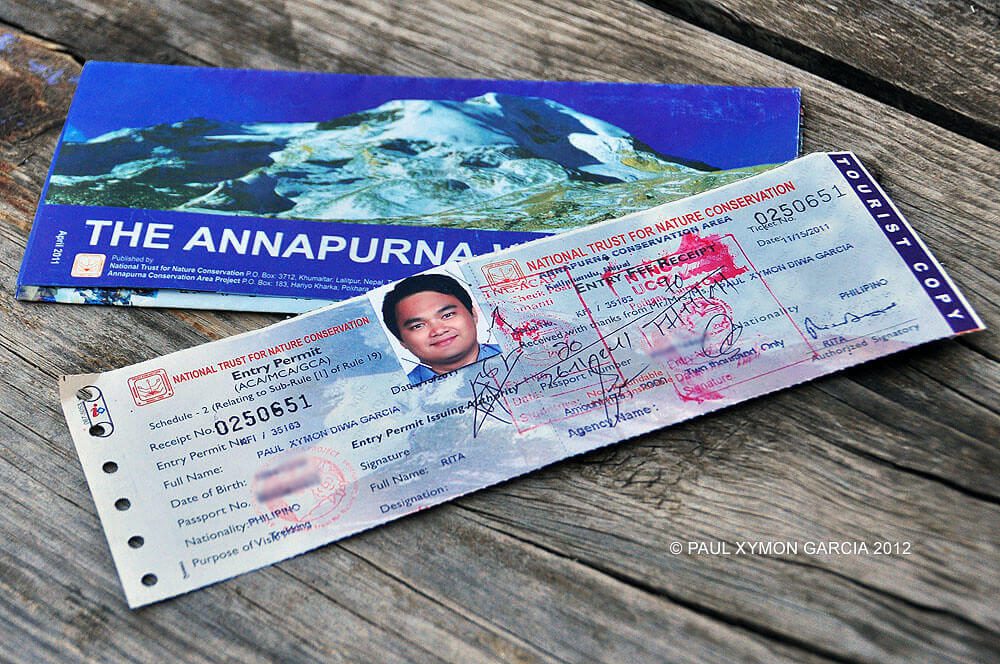
Where to get the Annapurna Circuit Trek permits?
Kathmandu: If you are in Kathmandu, you can get the Nepal Tourism Board Office permits on Pradarshani Marg, Kathmandu.
Pokhara: In Pokhara, you can purchase them from the Nepal Tourism Board Service Center in Damside or the ACAP entry permit counter in Besisahar, Lamjung. Furthermore, you can also get the TIMS card from the TAAN Lakeside office in Santi Patan, Pokhara.
Required Documents to apply for the permits
- Copy of your Passport
- 4x Passport size Photographs
- Entry and exit point in this Trek
- Emergency Contact info in Nepal
- Emergency Contact info from your Home Country
- Trekking Itinerary that shows the start and end dates
- Travel Insurance
- Fees for the form
P.S.: If you hire a guide, he will manage all the documents and get the Annapurna Circuit Trek permits.
When is the Best Time to Trek the Annapurna Circuit Trek without a Guide?
While trekking without a guide, it is essential to know when to trek. The last thing you want is the weather not supporting you. Thus, autumn and spring are the best time of the year for the Annapurna Circuit trek without a guide. In Nepal, autumn falls from September to November and spring from March to May.
During these times of the year, the weather and temperature of Annapurna Circuit are perfect for trekking. The Autumn and Spring season offers bright and clear days and warm temperatures, giving you the best views of the mountain. The trails are dry. These conditions do not reduce the Trek’s difficulty and keep you safe but allow you to have the best trekking experience without a guide.
Except for these months, the cold or the rain may cause many difficulties while trekking alone in this region. Hence, if you are trekking the Annapurna Circuit without a guide, check the weather properly.

How long will the Annapurna Circuit Trek be without a guide?
Following our itinerary, Annapurna Circuit Trek takes around 15 days to complete without a guide. However, when traveling without a guide, the Annapurna Circuit hike can range from 9 to 28 days to complete, covering your arrival and departure days.
On average, you will walk 5 to 6 hours daily during the trek days. The walk will be shorter and more extended on some trekking days. The walking time may vary if you are trekking without a guide. Hence, you need to plan the itinerary carefully. Also, don’t forget to have a few acclimatization and rest days during the Trek.
How to Get To and From the Start and End Points of The Annapurna Circuit Trek Without a Guide?
Initially, you need to travel to Pokhara and then get to the actual starting point of the Trek. For the Annapurna Circuit Trek, there are various stops on the trekking route where you can choose the starting and endpoint of the Trek. Here is the list of starting and endpoints of the Trek that you can choose:
Starting Points:
- Besisahar
- Bahundanda
- Chamje
- Bagarchap
End Points:
- Kagbeni
- Jomsom
- Marpha
- Tatopani
- Ghorepani
- Nayapul
- Ghandruk.
You will have different ways to get to these points. If you hire a trekking guide, s/he would recommend the starting and highest point of the Trek and take you to those places. But without a guide, you need to collect as much information about the places and the transportation. The most common ways to travel are as follows:
Jeep: If you travel via land, traveling in a jeep is convenient. It is much more comfortable than other road transportation. It has a seat of 6 to 8 people. You can quickly get a jeep from Kathmandu to Pokhara to your start and endpoint. If you are in Kathmandu, you can find them in Thamel or New Bus Park in Kalanki. You can travel by jeep from Muktinath to Jomsom.
Flights: There are domestic flights from and to Jomsom-Pokhara and Pokhara-Kathmandu. A domestic flight takes you to Pokhara, half an hour from Kathmandu.
Local Buses: This is the cheapest way to travel in Nepal. Local Buses run regularly in different places on the Annapurna Circuit Trail. Due to ongoing road construction, the places are accessible by road. You can also plan side trips using local buses.
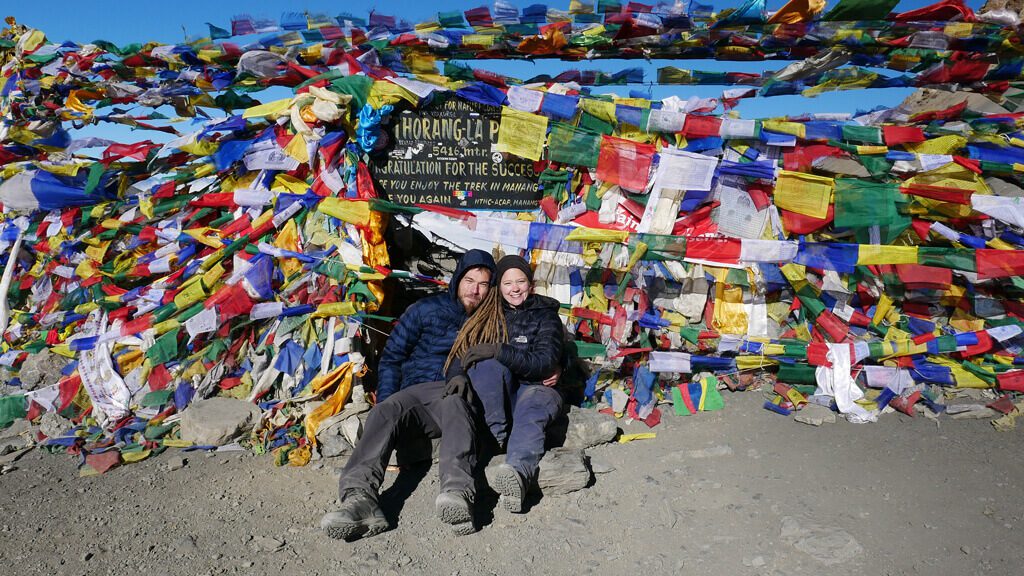
How hard is it to find accommodation in Annapurna Circuit Without a Guide?
Annapurna Circuit Trek is much easier to complete with a guide or a trekking agency as they will deal with every problem that may arise during trekking. Thus, the guide will manage the accommodation and food for you. But when trekking solo, you must hassle up and manage everything yourself.
Luckily, Annapurna Circuit Trek without a guide is a famous teahouse trek in Nepal, meaning there are several teahouses and lodges for accommodation and flooding. However, since many trekkers are on the trail during the peak season, you must rush to find the rooms.
The teahouses are essential, with a bare room and an attached bathroom. The rooms in the teahouses are on a twin-sharing basis. Thus, you will have to pay a little more to get a room for yourself.
Once you find a room, you don’t have to worry about the food as all the teahouse provides food.
Packing Essentials For Solo Travel
Without a guide in Annapurna Circuit Trek, Trekking means you will carry your luggage. So you must carry light and leave unwanted things in your hotel, Kathmandu or Pokhara.
1. Clothing
Depending upon the time of year, the packing of the clothes varies. Since Annapurna Circuit Trek without a guide is not favorable and is not recommended during the winter and monsoon seasons, here is a list of clothes you will need to pack while trekking in autumn and spring:
- Quick-dry T-shirts (Short and long sleeves)
- Trekking trousers
- Breathable underwears
- Cap, hat
- Rainproof Windbreaker
- Down Jacket
- Sunglasses
2. Footwear
- Hiking boots
- Flip-Flops
- Additional pairs of socks
3. Medical supplies
- Basic First Aid (Band-aids, Alcohol Swipes, Charcoal pills)
- Antibiotics
- Altitude sickness medicines
- Dettol Wipes
- Baby Powder
4. Miscellaneous
- Whistles
- Trekking poles
- Map (Most Important while trekking solo)
- GoPro and Camera
- Universal Adapters
- Extra Memory Card
- Power Banks and extra battery
- Flashlights
- Water Bottle
- Toilet Roll
- Sunscreen
For more detailed info about the packing list, please read our blog on “Packing List for Annapurna Circuit Trek.”
Difficulties During the Annapurna Circuit Trek Without A Guide
1. Acclimatization
One of the significant problems with trekking without a guide is the lack of knowledge of where and when to acclimatize. This is the primary reason for Altitude Sickness. Since you are trekking at a high altitude, acclimatization is essential. Bring one of the high-altitude treks; the Annapurna circuit requires proper acclimatization. Hence, it would help prepare a suitable itinerary with proper acclimatization days.
2. Food and Accommodation
Without a guide, you will face difficulties managing food and accommodation while trekking the Annapurna Circuit. Having a guide would help you manage the food and accommodation beforehand. However, trekking solo without a guide means rushing to manage your accommodations and food.
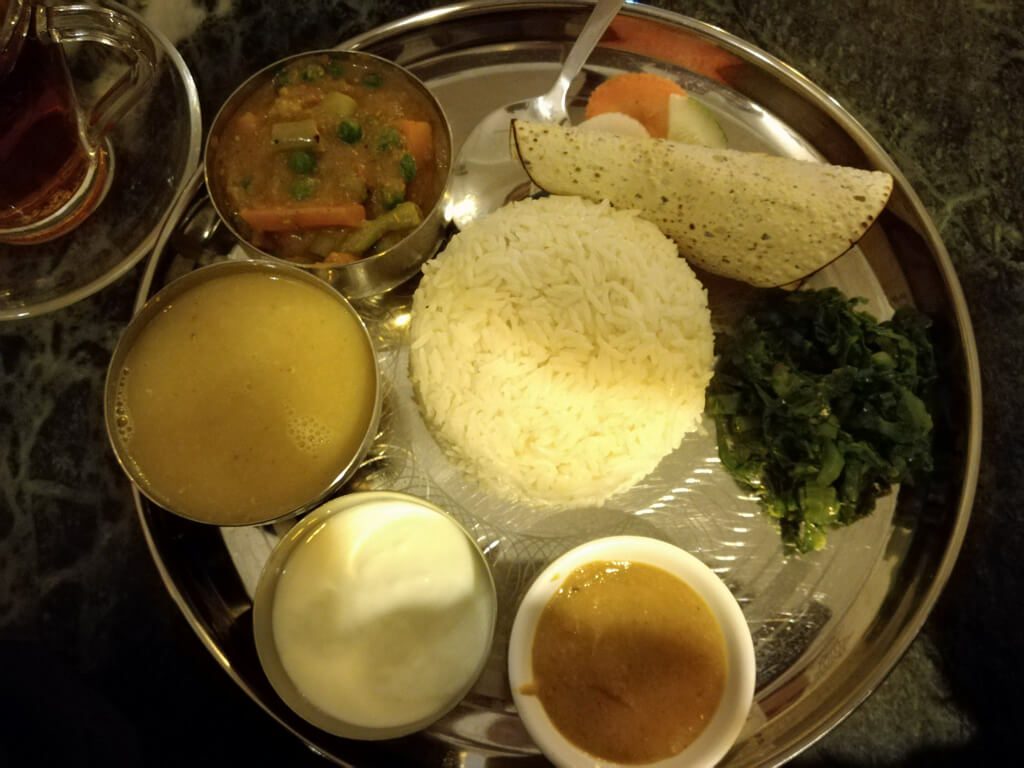
3. Knowing The Routes
While trekking, maps come in handy every time. But when you are traveling alone, having a map is a must. Finding the correct route through the twists and turns is challenging, even with a map. Thus, it can be challenging to find the best trail.
4. Carrying Your Luggage
Finding the food and accommodation can be challenging, but you must carry your luggage. Hence, you must carry light.
5. Emergency Cases
Apart from other difficulties regarding the Trek, the main question that comes to mind while trekking without a guide is, “What to do in case of emergency?”. Anything can happen while trekking alone. Thus, it would be best if you took all the preventive measures.
Due to these Annapurna Circuit Trek difficulties, it is not recommended to trek solo on this trail. Furthermore, always find a group while trekking in challenging trail parts, such as crossing Thorong La Pass.
Mobile phones and other communication devices may not be accessible at a higher altitude, which might be a problem in emergencies. Thus, you may be helpless to any natural hazards or health hazards. Hence, you must be mentally prepared to do this Annapurna Circuit Trek without a guide.
Preparation Required For Trekking Without A Guide
1. Mental Preparation
Traveling without a guide in the Annapurna Circuit is not a simple task. It requires a lot of mental preparation. It would help to prepare yourself mentally to handle any situation without panicking. Therefore, be prepared mentally before leaving for the trip.
2. Physical Training
It would help if you were physically fit to complete the Annapurna Circuit Trek Distance with mental preparation. On average, you need to walk for 5 to 6 hours per day. In addition, you will be carrying your luggage if you are trekking the circuit without a guide or a porter.
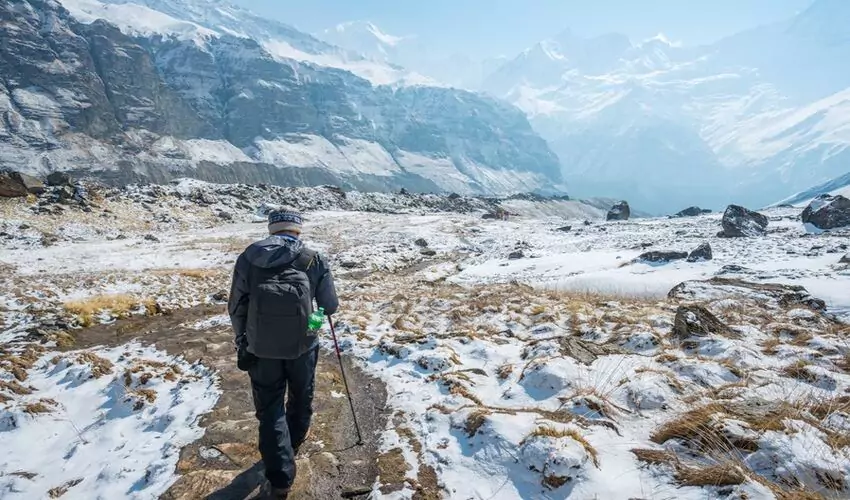
3. Cardio Training
You will walk 5 to 6 hours daily with your backpack, which is not a joke. Thus, you must have good stamina for this. So, before you hit the trail, prepare to increase your stamina by working out. You can do cardio training such as jumping, swimming, skipping, etc., which will significantly help you increase your stamina and prepare yourself for the Trek.
4. Trekking Gear
Lastly, since you will be trekking the Annapurna Circuit Trek without a guide, you will carry all the trekking gear and equipment. Hence, you must have all the necessary trekking gear and avoid unwanted things.
For more detailed info: How to prepare for Annapurna Circuit Trek?
Related Articles
- Annapurna Circuit Trek FAQs
- Annapurna Circuit Trek Cost
- Significant Highlights of Annapurna Circuit Trekking
Tips for Annapurna Circuit Trek Without a Guide
- Ensure you have a well-planned trail map or the Annapurna Circuit trek guide. This will help you not get lost.
- Always ask the locals if you are not sure about the trail.
- Don’t ask the locals about the distance and duration of the next destination, as the timing will differ depending on what you take.
- Have good acclimatization days.
- Always purify the water during the trail.
- Carry some extra cash that will last throughout the treks. Since there are no ATM services in the mountains, it is better to prepare beforehand.
- If you are a beginner, I recommend hiring a porter or a guide.
- Have fun.
Traveling with a trusty guide
Although traveling with a trekking guide can cost you more, you will have a more relaxed and comfortable trek. Annapurna Circuit Trekking is an adrenaline rush but also complex and risky. Trekking with a guide is relatively costly, but it is safer. Here are some of the advantages if you do the Annapurna Circuit Trek with a guide:
- You will be trekking through safer routes with mesmerizing views of the Himalayas.
- You will have proper acclimatization.
- Having a guide will help you during emergency cases.
- Proper and detailed itinerary
- Your guide will pre-book the accommodation and food for you.
Itinerary of Annapurna Circuit Trek without a Guide
Day 01: Arrival at Tribhuvan International Airport, Kathmandu (1300m)
Day 02: Drive to Chamje (1430m) via Besisahar (830m), 7-8 hours drive.
Day 03: Trek from Chamje to Dharapani (1960), 6 hours of Trek.
Day 04: Trek to Chame (2630m), 5-6 hours of Trek.
Day 05: Trek to Pisang (3300m), 5-6 hours of Trek.
Day 06: Trek to Manang (3570) via Ghyaru, 5 hours of Trek.
Day 07: Acclimatization day in Manang
Day 08: Trek to Yak Kharka(4,110m), 3-4 hours of Trek.
Day 09: Trek to Thorong Phedi (4650m), 3-4 hours of Trek.
Day 10: Thorong Phedi to Muktinath(3800) via Thorang pass (5416m), 7-8 hours of Trek.
Day 11: Jeep drive to Tatopani (1100 m), 7-8 hours drive.
Day 12: Trek to Ghorepani (2800m), 6 hours of Trek.
Day 13: Early morning hike to Poon Hill (3210m), descend to Tikhedhunga, and drive to Pokhara for 8 hours.
Day 14: Drive from Pokhara to Kathmandu, a 5-6 hours drive.
Day 15: Departure
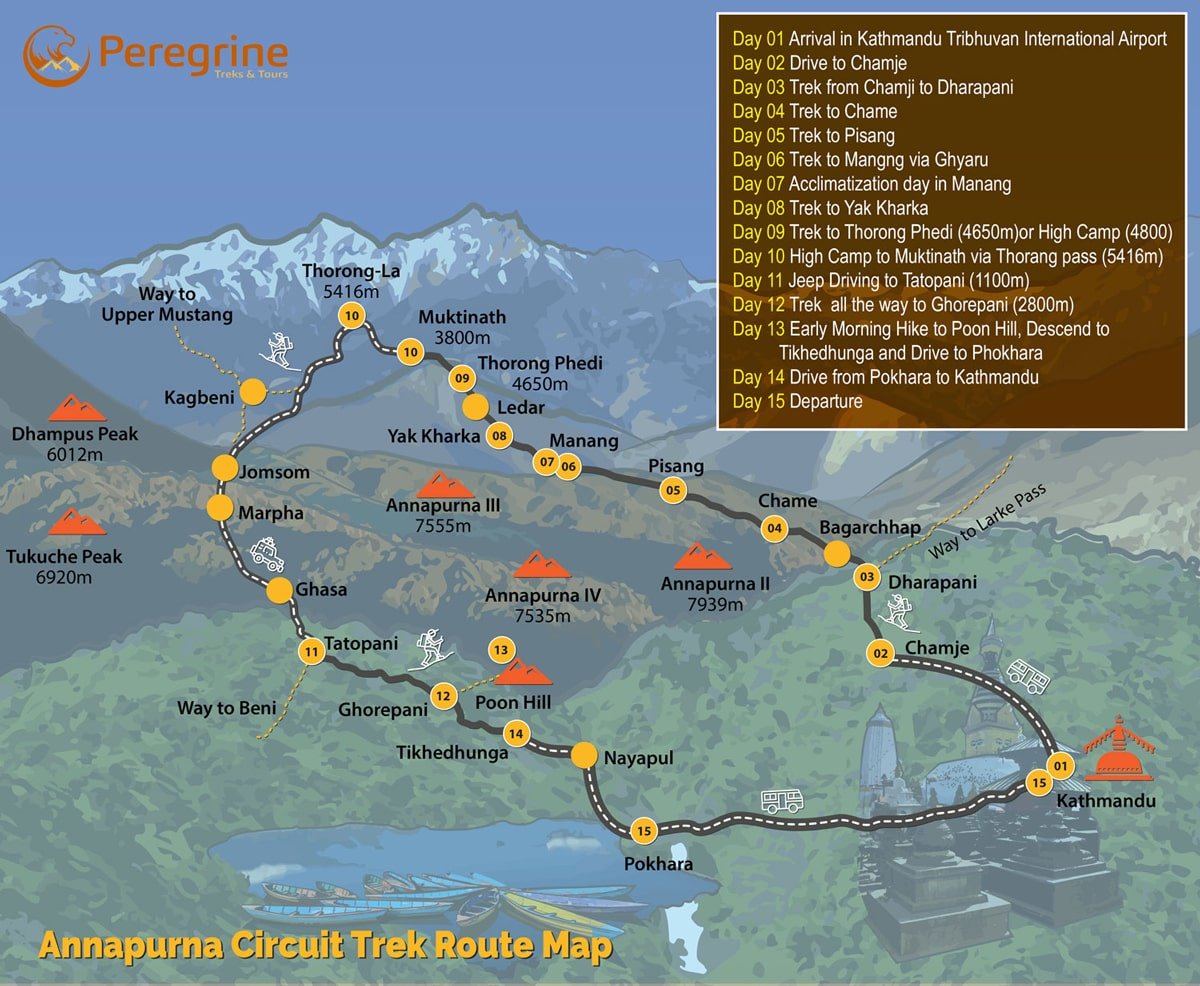
You can get the direct jeep to Manang from Beshisahar, but we won’t recommend you take a direct jeep up to Manang because of the altitude. It is better to take a jeep up Dharapani and trek there. You can go to Ice Lake, Gangapurna Lake, and Tilicho Lake during this Annapurna Circuit Trek. It’s easy to go to Gangapurna Lake and challenging to go to Tilicho Lake. Ice Lake is adventurous, and we won’t recommend you to go there solo. The roads are not good; we recommend you check the road condition before Annapurna Circuit Trek.
Similarly, you can take a flight from Jomsom to Pokhara if you want to save a few days better to take a flight from Jomsom to Pokhara. You need to go to Jomsom from Muktinath and fly to Pokhara. This might be another option for you. If you do this, you will miss the Hot Spring at Tatopani and the sunrise view from Ghorepani.
Final Say,
If you properly plan and prepare for the Trek, the Annapurna Circuit Trek without a guide can be a lifetime experience. Feel free to contact us with any further questions or queries about this Trek or any other treks in Nepal.
We highly recommend trekking with government-registered trekking companies like Peregrine Treks and Tours. A solo trek might not be the right decision at all times. You might not always get the correct information. Animals might attack you; you may lose the trekking trail, and the cost will also be high.
If you trek with a group or companies, you will be socially connected with the Nepalese community; you will get a better experience of the adventure, use the knowledge and experience of the guide, be safe in the numbers, healthy beings, take care of your health, nature connection, motivation and inspiration of other trekkers and guides, and last but not list you do have planned itinerary with best alternatives.
Here is a link to missing trekkers who lost their lives during trekking in the Nepal Himalayas. Most of them are individual trekkers, meaning they trekked without a guide or porter. https://www.missingtrekker.com/missing-trekkers/

